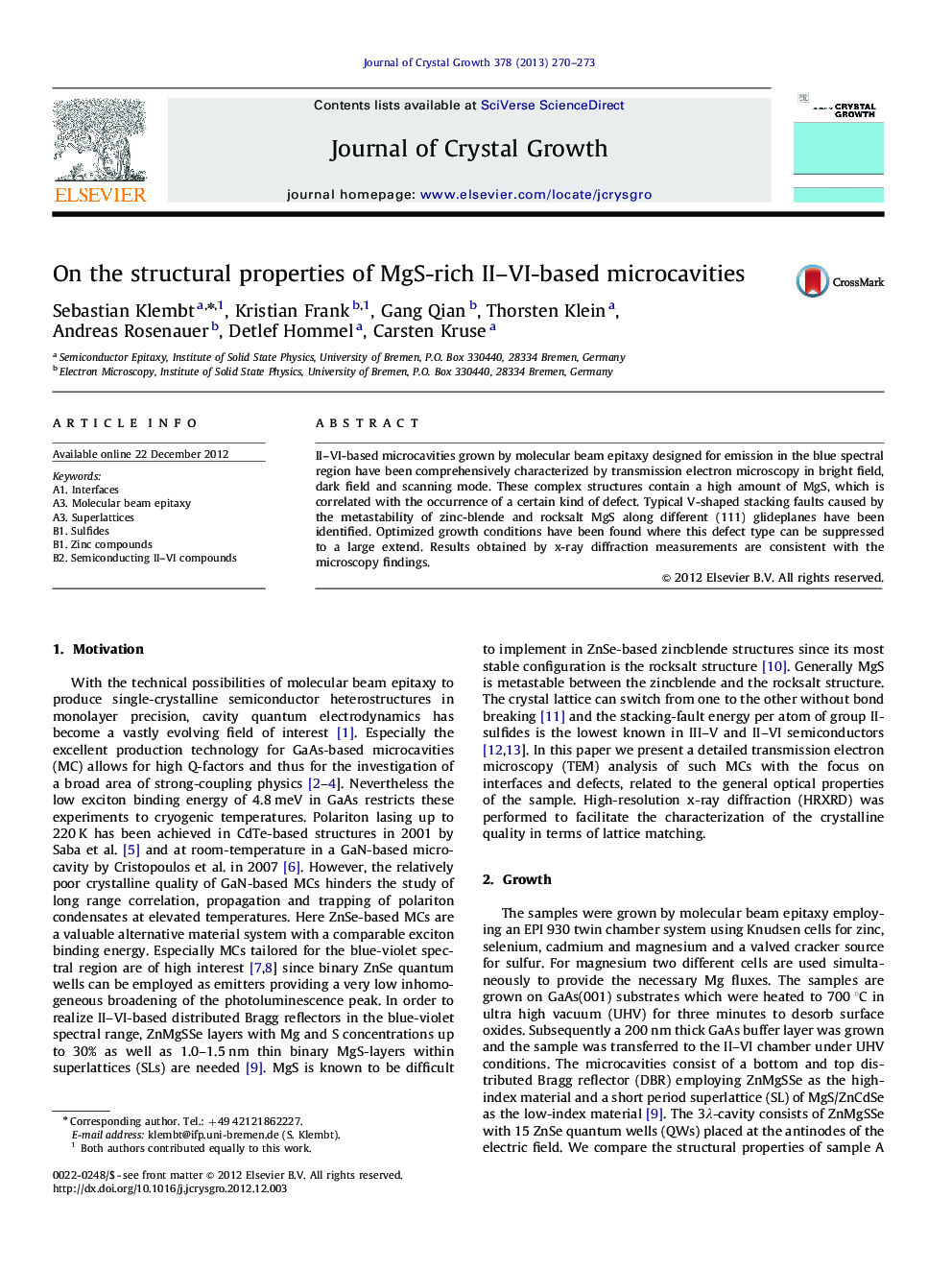| Article ID | Journal | Published Year | Pages | File Type |
|---|---|---|---|---|
| 1790828 | Journal of Crystal Growth | 2013 | 4 Pages |
II–VI-based microcavities grown by molecular beam epitaxy designed for emission in the blue spectral region have been comprehensively characterized by transmission electron microscopy in bright field, dark field and scanning mode. These complex structures contain a high amount of MgS, which is correlated with the occurrence of a certain kind of defect. Typical V-shaped stacking faults caused by the metastability of zinc-blende and rocksalt MgS along different (111) glideplanes have been identified. Optimized growth conditions have been found where this defect type can be suppressed to a large extend. Results obtained by x-ray diffraction measurements are consistent with the microscopy findings.
► The structural properties of II–VI-based MC with high amount of MgS are investigated. ► V-shaped defects associated with ββ-MgS investigated by bright- and dark-field TEM. ► Similar defect structure in superlattices containing ββ-MgS as in bulk ββ-MgS. ► Precise lattice matching drastically reduces the density of MgS related V-defects. ► Optimized microcavities showing Q-factors of up to 3800.
